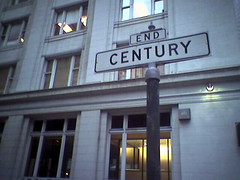As I have grown older, I have been amazed to realise that the more I know, the greater is my capacity to learn. Not only can I quickly absorb new information and transform it into knowledge, I can also direct this towards business and branding opportunities. Even where I come in contact with some completely foreign information, my brain scrambles to find a connection that allows me to contextualise it.
But what about you? Do you find that your capacity has increased over time?
Angela Maiers provides a great explanation in this 30 minute class. She leads us through the different types of connections that we can make so that our memories can be stimulated:
- Easy – the simple connection can be made because of our exposure to a topic. There is no work involved here. A common topic will add a new layer over the knowledge schema that we already possess – and the information will be readily accessible to you in an instant.
- Dig – while a piece of information may not have an instantly recognisable hook on which you can make a connection, a small amount of digging into your own knowledge will help you. This will require some effort, but will also help turn a piece of new information into actionable knowledge.
- Impossible – when we are introduced to an alien concept, we are faced with an impossible situation. There are no EASY ways to make sense of the information. Digging provides no context and no prism for understanding. When faced with the impossible piece of information, our natural instinct is to begin to memorise, to rote learn – but this is a mistake, for without providing some personal context to this information you will not be able to retain and apply this knowledge. It will gradually fade from memory.
In the last 10 minutes of this video, Angela shares an approach that allows us to begin creating NEW memories. She explains the technique for creating the first thread of retained knowledge upon which you can build additional context.
- Chunking: After reading/absorbing a piece of information, the main ideas are categorised by the ideas that they invoke. This is not about collecting facts. It is about finding one or two words that connect and explain the overall concepts.
- Joining the dots: Once you have the “big ideas” you then need to make connections between them. You need to write them down. You need to establish a narrative between them.
Now, think about this from a branding and marketing perspective. Have you ever wondered why some things stick and some don’t? In general, the information that comes to us through advertising is “impossible”. We are hit by facts and assaulted by images. These all seek to CONVINCE us.
However, if we are each subjected to 5000 marketing messages per day, the blink of an eye that acknowledges each new message will instantly erase the previous one. This means that those marketing messages that are mediated, that come with BUILT-IN context, are more likely to anchor in our memory (hence the use of popular music/spokespersons) – and this plays particularly strongly for digital/social media.
And in a time of increasing financial uncertainty, brands will be looking not to CUT THROUGH but to CUT OUT. It won’t be a matter of your brand standing out in a crowd, but of eeking out some space in which it can create meaningful context in which your consumers can participate. Those brands who have begun experimenting with social media will have an advantage in these tougher times; and those who have not will need to accelerate their engagement by hiring agencies and consultants who have a deep understanding of hands-on brand activation in the digital/social media space.
Interesting times? Sure … but really, as Angela Maiers says, it’s about making connections.

![Reblog this post [with Zemanta]](https://img.zemanta.com/reblog_e.png?x-id=e808e58c-e971-459e-9226-0ad103992ae2)



